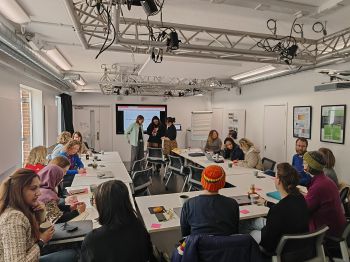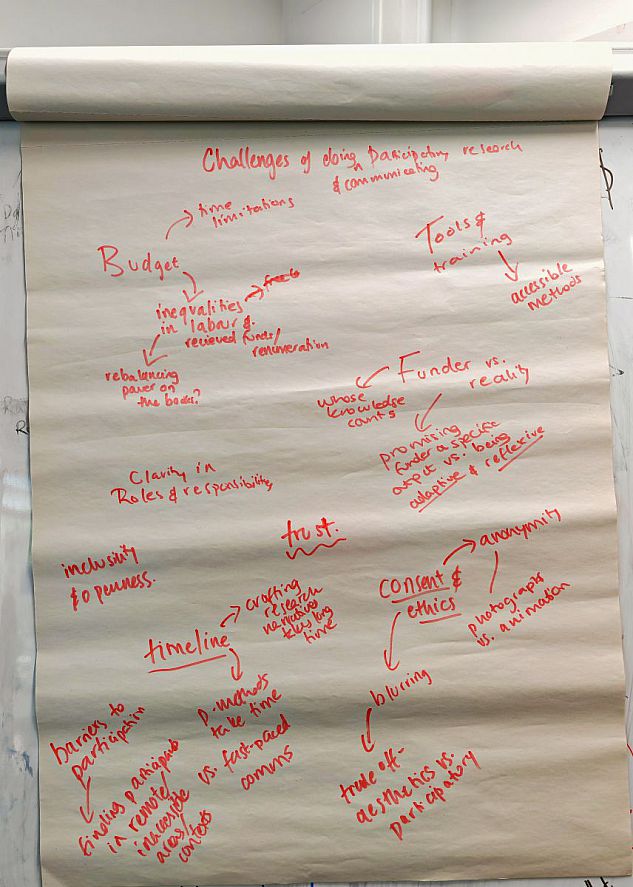Best practice for communicating participatory research discussed at recent SPRN Sharing Practice session
By: Ian Sinclair
Last updated: Wednesday, 21 May 2025

On 7 May, members of the Sussex Participatory Research Network (SPRN) were joined by Alice Webb, Eve McKeown, and Laura Ulanowski in the Sussex Humanities Lab for a Sharing Practice session on Communicating Participatory Research from the Institute of Development Studies (IDS). The event introduced members to best practices on how to share communication regarding their work, provide specific examples of such communication produced with IDS and SPRN, and opened discussion about scenarios or challenges that have been encountered when trying to tell stories of participatory research.
Voice and representation in participatory research
The first question attendees were invited to think about was ‘why communicate participatory research’? It might seem obvious – after all, doesn’t all research need to be communicated? Well, yes! But distinctive to participatory research is that the participants themselves have been intimately involved with the research, and, just like researchers, they too want to see what they have been involved in be shared and shared well.
Communicating participatory research is not just about expanding awareness and knowledge but giving voice and representation to participants who have been involved, thereby breaking down power dynamics often found in typical research.
How do we communicate participatory research?
The second question attendees grappled with was: what makes good communication of participatory research? Several words circulated, and those that stood out most were:
- Transparent
- Creative
- Patient
- Jargon-free
- Accessible
- Reflexive
- Involving
- Empowering
- Sensitive
Crucially, thre was a sense that no one principle ‘reigns supreme’. Part of communicating participatory research is involving participants, going back to them and checking what is being communicated and how. What is ‘jargon-free’ for a researcher might not be jargon-free for the intended audience!
Making participation visible
Before looking at some case studies, attendees were asked to think about what the underlying principles of participatory research are. Why pose the question about fundamental principles last? At the heart of participatory research is visibility – making all stages of the research visible and transparent, and making visible those involved in or affected by the research. By thinking about how we do participatory research and communicate it, the principles of participatory research (visibility, representation, reflexivity) are not abstract ideals, but embedded practices already rooted in the doing of participatory research and communication.
About The Sussex Participatory Research Network
The Sussex Participatory Research Network (Sussex PRN), established in July 2023 under the Sussex Knowledge Exchange and Impact Support Programme, recognizes the extensive experience in participatory research approaches across our campus.
Sussex PRN offers a platform for colleagues to share experiences, best practices, and build skills in participatory research methods. Since its inception, the network has hosted several engagements and now has over 117 members from all faculties.
If you are interested in joining the Sussex PRN and staying updated on activities, please contact Ian Sinclair (research.initiatives@sussex.ac.uk) in Research and Enterprise.

